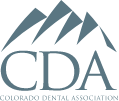
Nobody hands you a how-to book on what you can expect as your child’s smile develops. However, with help from your pediatric dentist, you can make sure that their oral health remains on the right track. By knowing these five dental myths, which you’ve probably heard about, and why you shouldn’t take them as fact, you can take better care of your child’s smile without having a looming sense of being an “inadequate parent” linger over your head.
You Don’t Have to Brush Baby Teeth Because They’ll Fall Out Anyways
While it’s true that your child’s temporary (or “baby”) teeth will fall out on their own, it’s still important to care for them, because they act as the space holders for their permanent teeth when they grow in. If your little one loses a tooth too soon, as a result of an oral health issue, it could put the health of their adult tooth beneath it in harm’s way or affect the alignment of their permanent teeth as they grow in.
Kids Should Never Chew Gum
The thought of a child chewing gum can be scary, considering that it can get in their hair and all over their hands. When your little one is old enough, you can give them sugar-free chewing gum to keep their mouth busy. It helps them produce more saliva, rinsing away debris between and on their teeth as well as neutralizing harmful acids in the mouth that can erode their enamel.
Cavities are Only Caused by Sugar
It’s true that the same harmful oral bacteria that cause cavities and gum disease love feeding off of sugar, but that’s not the only thing that can result in this issue. Carbohydrates play another large role in feeding bacteria in the mouth, combining with saliva, and creating a sticky plaque that attaches to the teeth. Without routine brushing and flossing, these common ingredients found in food can increase your little one’s risk of dental decay.
Kids Don’t Need to Use Fluoride Toothpaste Until They Get Older
The American Academy of Pediatrics recommends that parents begin brushing their children’s teeth using fluoride toothpaste as soon as they erupt above the gumline, which is typically around the age of one. Because smaller children may swallow the toothpaste, only use an amount the size of a grain of rice for those who are two years and younger. Once your child turns three, you can use a pea-sized amount.
Children Can Brush Their Own Teeth
Even though your toddler may be able to physically brush their teeth, it doesn’t mean that they should do so alone. They’ll need to learn the proper brushing techniques, and their fine motor skills aren’t fully developed, which is why pediatric dentists often recommend that parents brush and floss their children’s teeth until they’re around preschool-age.
With these five common myths about children’s teeth debunked, you can feel confident knowing that you’re doing the best you can with the knowledge you have when it comes to caring for your little one!
About the Author
Dr. Layne Benzley is a board-certified pediatric dentist as well as a Diplomate of the American Board of Pediatric Dentistry. He has always been passionate about helping children maintain healthy, complete smiles throughout their lives by teaching them how to take care of their teeth and gums. As a parent himself, he understands how overwhelming it can feel making sure that your child is receiving the top-tier care they deserve, which is why he’s dedicated to providing just that. To schedule an appointment for your little one, visit Castle Rock Smiles Pediatric Dentistry’s website or call 303-660-5373.







